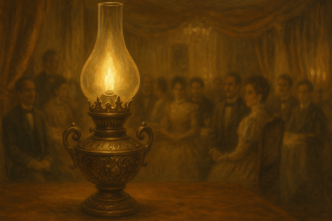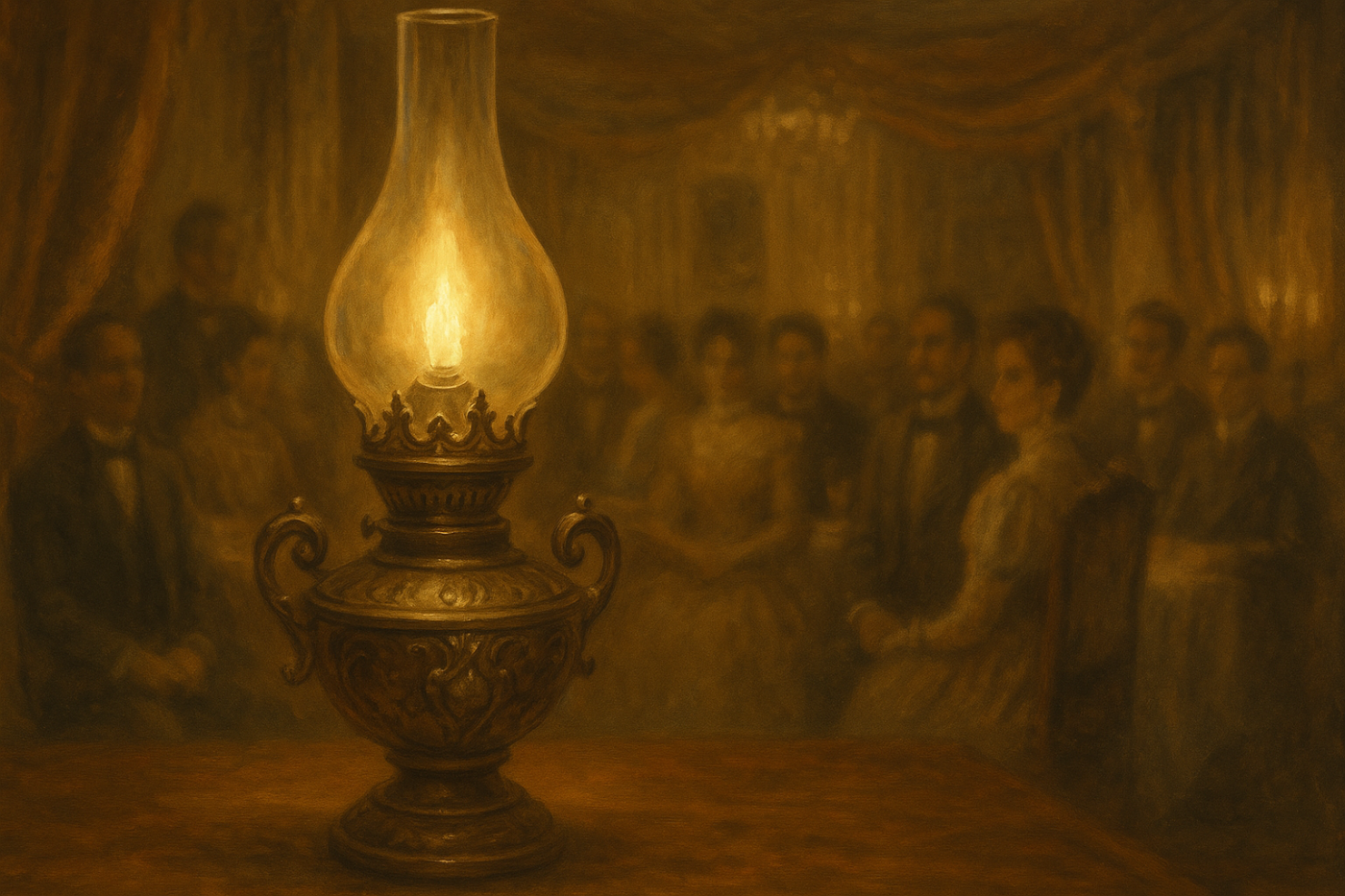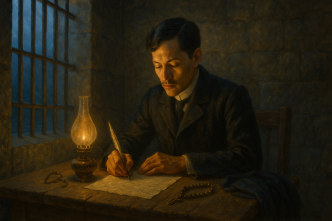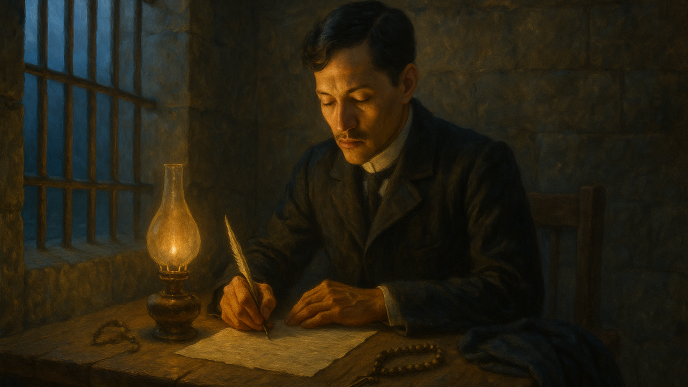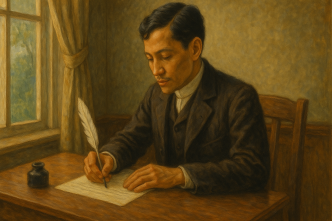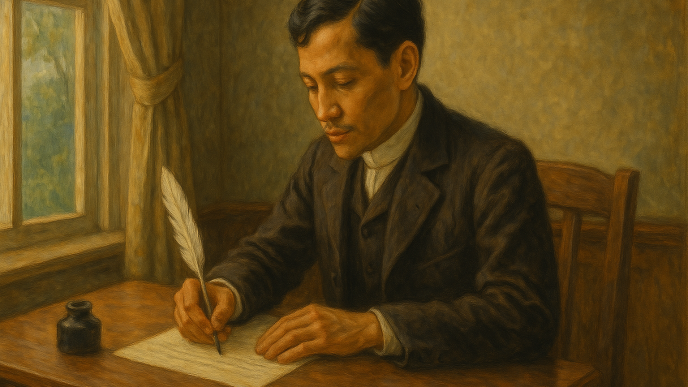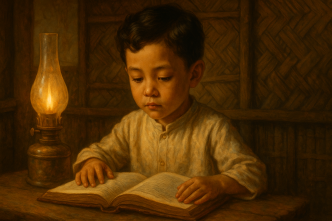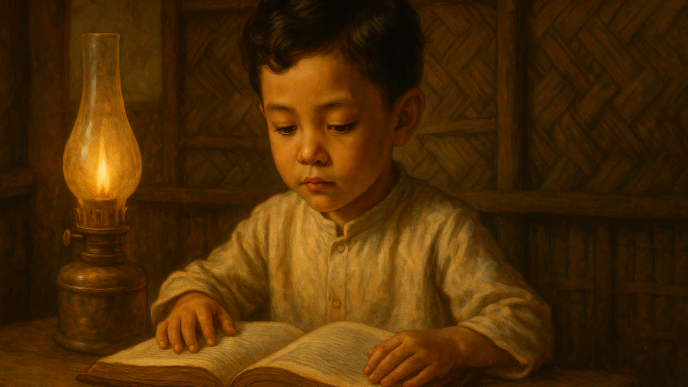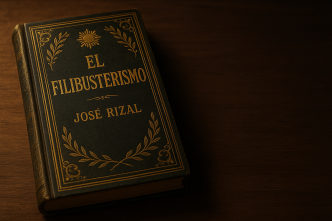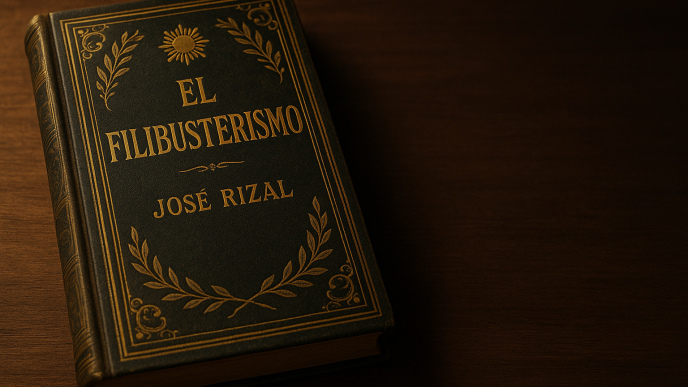Quick facts
- Original language: Spanish
- Published: 1891, Ghent (printed under financial strain)
- Form: Social-political novel; sequel to Noli Me Tangere
- Key figures: Simoun (Crisóstomo Ibarra in disguise), Basilio, Isagani, Paulita Gómez, Kabesang Tales, Juli, Placido Penitente, Quiroga, Don Custodio, Ben Zayb, Padre Florentino, Padre Camorra
- Core idea: If Noli diagnoses a “social cancer,” El Fili asks whether revenge, reform, or inner renewal can cure it — and what freedom requires from citizens.
Summary
Opening: a society stacked in decks
The novel opens on the steamship Tabò cruising the Pasig: the powerful on the upper deck, common folk below. The scene is a map of colonial hierarchy—friars, officials, merchants, and students sparring with words while the boat chugs through the capital’s heart.
Enter Simoun
A mysterious, wealthy jeweler named Simoun — in truth Crisóstomo Ibarra who survived the events of Noli — has returned after years abroad. Hardened and shrewd, he cultivates the governor-general and the elite, funding their vices while secretly seeding a revolution. His method is not gradual reform but catastrophe: push the rotten structure to collapse.
The people around him
- Basilio, once the orphaned boy at Sisa’s grave, is now a medical student who dreams of uplift through learning.
- Isagani, an idealistic poet, loves Paulita Gómez, who is dazzled by social status and courted by Juanito Pelaez.
- Kabesang Tales, a tenant farmer dispossessed of his land by ecclesiastical abuse, turns bandit (Matanglawin).
- Juli, Tales’s daughter and Basilio’s beloved, becomes a victim of predation and despair after Padre Camorra’s advances and her father’s case ruin the family.
- Placido Penitente quits school in disgust at a system that humiliates students; Don Custodio, Ben Zayb, and Quiroga caricature a media-bureaucracy-business triangle ready to sell anything for comfort.
Students and a petition
Students organize to establish an Academia de Castellano (ironically asking to learn the colonizer’s tongue to gain equality). Authorities string them along; Basilio is later imprisoned when unrest is blamed on radicals. Simoun secures his release, hoping to recruit him to vengeance. Basilio, broken by Juli’s death, finally consents.
The wedding and the lamp
Simoun’s masterstroke is to bomb the wedding of Paulita and Juanito using a gifted lamp whose explosion will ignite an uprising. Isagani, warned by Basilio and still loving Paulita, snatches the lamp and hurls it into the river, averting massacre and accidentally wrecking Simoun’s plot.
Collapse and confession
Wounded and hunted, Simoun flees to the seaside home of Padre Florentino, a Filipino secular priest who stands outside friar politics. There, stripped of disguises, Simoun dies after a final confession. Florentino casts the jeweler’s chest of jewels into the sea, delivering the book’s hard teaching: freedom won by greed and hatred will only enthrone new tyrants; a nation must become morally worthy of liberty.
Major themes
1) Revenge vs. reform vs. renewal
El Fili is a three-way argument. Simoun believes only shock and terror can break the system. The students strive for procedural reform through petitions, law, and language. Padre Florentino insists on inner renewal—a moral citizenry, not merely a power swap. Rizal stages these options and lets their limits collide.
2) The costs of complicity
From the Tabò’s seating chart to bureaucratic jokes about “solutions,” the novel tracks how everyday convenience props up oppression. Don Custodio’s laziness, Quiroga’s smuggling, Ben Zayb’s flattery—small corruptions create a climate where brutalities thrive.
3) Education and its discontents
If Noli treats education as emancipation, El Fili shows a captured schoolhouse. Professors humiliate; language is gatekeeping; merit bends to favors. The question shifts from “Can education save us?” to “What kind of education and for whom?”
4) Women, class, and power
Juli’s tragedy and Paulita’s choice dramatize how patriarchy and class aspirations serve colonial control. Desire for status becomes a leash; poverty becomes vulnerability.
5) Press, business, and the state
Rizal satirizes a triangle where capital and spin neuter justice. Ben Zayb manufactures narratives; Quiroga finances favors; officials look away. Propaganda defeats truth long before any bullet flies.
6) Failure as a pedagogue
The failed plot is the point. By refusing to deliver a triumphant revolution, Rizal forces readers to confront the ethical prerequisites of change: character, solidarity, competence, and a love of country deeper than resentment.
Literary analysis
From mirror to scalpel
Where Noli mirrors abuses with tragic tenderness, El Fili is a scalpel — tighter, darker, more satirical. The pacing moves between public spectacles (processions, salons, the wedding) and private reckonings (Basilio in prison; Simoun with Florentino).
Character arcs as arguments
- Simoun (Ibarra): Enlightened reformer turned nihilistic engineer of disaster. His brilliance exposes a temptation: to treat people as pieces on a board.
- Basilio: The hope of education, nearly consumed by grief and revenge; his warning to Isagani becomes the novel’s moral hinge.
- Isagani: Romantic idealist whose self-sacrifice (saving the wedding guests, including his rival) hints at the ethical route forward.
- Padre Florentino: A vision of principled leadership—rooted in faith, yet opposed to clerical abuse and empty zeal.
Symbolic set-pieces
- The Tabò steamer: a floating diagram of colonial class and conversation.
- The bomb-lamp: technology without ethics; progress as a weapon.
- The jewels in the sea: wealth earned through exploitation cannot found a just republic.
Impact “then” (late 19th century)
- Radicalization of discourse. If Noli scandalized, El Fili darkened the national conversation, naming the dead-ends of petitions and exposing how elites can hijack reform.
- Bans and backlash. The novel circulated clandestinely; friars attacked it; authorities surveilled readers. Rizal’s stature — and risk — rose.
- Bridge to revolutionary imagination. Although Rizal personally argued for civic awakening over premature revolt, the book educated revolutionaries, sharpening their critique of clergy, bureaucracy, and comprador elites.
Civic afterlife (now)
- Rizal Law (RA 1425). Philippine schools study Noli and El Fili, not as relics but as civic textbooks — training readers to analyze power, rhetoric, and policy.
- Diagnostic clarity. The novel’s anatomy of elite capture, performative piety, media manipulation, and state-business collusion remains legible in contemporary scandals.
- Student citizenship. From campus presses to petitions, the book’s students still model organized, ethical dissent — and warn against both apathy and nihilism.
- Debates on means and ends. El Fili is routinely invoked when public anger tempts shortcuts — reminding citizens that corruption of methods corrupts the outcome.
- Culture and adaptation. Theater, film, visual art, and graphic retellings keep Simoun’s blue-lit silhouette and the fateful lamp alive for new audiences.
Key takeaways
- Ends don’t cleanse means. Liberation sought through greed, spectacle, or terror enthrones new masters.
- Institutions matter — but so does character. Reforms fail without citizens capable of guarding them.
- Hope is disciplined. Isagani’s daring and Florentino’s counsel sketch a path where courage is guided by conscience.
